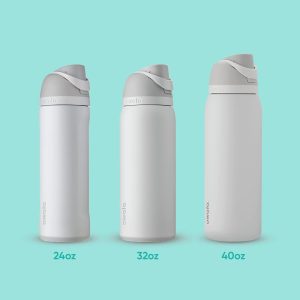Shopping tips are essential for anyone looking to make the most out of their purchasing experiences, whether online or in-store. From setting a budget to understanding the best times to hit the sales, smart shopping strategies can save you money, time, and stress. This blog post will guide you through various ways to optimize your shopping habits, ensuring you make informed decisions that benefit both your wallet and lifestyle. We’ll cover everything from leveraging discounts to making environmentally conscious choices, helping you become a savvy shopper in no time.
Table of Contents
1. Need Quick Guide? Essential Shopping Tips for the Busy Shopper
If you’re short on time but want to improve your shopping efficiency, this quick guide offers the key points from our detailed blog post on smart shopping tips. Here’s everything you need to know to save money, time, and shop smarter:
- Set a Budget: Always start with a clear budget to control your spending.
- Needs vs. Wants: Distinguish essential purchases from non-essentials to prioritize your spending.
- Shopping Lists: Use lists to avoid impulse buys and stick to your shopping plan.
- Best Times to Shop: Shop during off-peak hours for fewer crowds and better deals.
- Coupons and Discounts: Leverage coupons and promotional discounts to stretch your budget further.
- Online vs. In-Store: Choose the shopping method that best suits your needs for convenience and cost.
- Price Comparison Tools: Use online tools to ensure you are getting the best price available.
- Return Policies: Understand return policies to make hassle-free returns.
- Sustainable Practices: Opt for eco-friendly products and practices to reduce environmental impact.
- Quality Over Quantity: Invest in higher-quality items that last longer and provide better value over time.
For more detailed insights and practical tips on each of these points, be sure to read the full blog post below. Whether you’re shopping for groceries, clothes, or electronics, these strategies will help you become a savvier shopper in no time!
Read the full blog post for detailed insights and more smart shopping tips and other blog posts
2. Introduction to Smart Shopping: Mastering Essential Shopping Tips
In an era where consumer options are vast and varied, understanding effective shopping strategies is crucial. This guide on “Shopping Tips” aims to equip you with practical advice to enhance your purchasing power, ensuring that every shopping expedition, whether online or in-store, is as efficient and economical as possible. From setting a realistic budget to making informed choices about where and when to buy, smart shopping can significantly impact your financial health and time management.
Smart shopping isn’t just about spending less; it’s about spending wisely. It means making well-informed decisions that not only save money but also increase the value of your purchases. Whether you’re outfitting your home, updating your wardrobe, or simply buying groceries, knowing how to navigate sales, understand product quality, and plan your purchases can make all the difference.
Throughout this guide, we’ll dive into various shopping tips that help you make the most of your budget while satisfying your needs and preferences. By the end of this journey, you’ll have a toolbox of strategies that will transform the way you shop, making every dollar count.
3. Setting a Budget: The Foundation of Smart Shopping
Before embarking on any shopping expedition, it’s essential to establish a budget to guide your spending decisions. Setting a budget is the cornerstone of smart shopping, allowing you to prioritize your purchases and avoid unnecessary expenses. By allocating specific amounts for different categories of expenditure, you gain control over your finances and ensure that you don’t overspend impulsively.
Why Setting a Budget Matters
Setting a budget provides clarity and accountability, helping you track your expenses and stay within your financial limits. It empowers you to make intentional choices about where to allocate your money, whether it’s for necessities like groceries and bills or discretionary spending on entertainment and luxury items. Without a budget, it’s easy to succumb to temptation and overspend, leading to financial strain and regret.
How to Set a Budget
- Evaluate Your Income: Start by assessing your monthly income from all sources, including salaries, bonuses, and additional streams of revenue.
- List Your Expenses: Make a comprehensive list of all your monthly expenses, categorizing them into fixed (e.g., rent, utilities) and variable (e.g., groceries, entertainment).
- Identify Areas for Adjustment: Review your expenses to identify areas where you can cut back or reduce spending. This could involve renegotiating bills, finding cheaper alternatives, or eliminating non-essential purchases.
- Allocate Funds: Based on your income and expenses, allocate specific amounts for each category, ensuring that essential expenses are prioritized while leaving room for discretionary spending.
- Monitor and Adjust: Regularly monitor your spending against your budget and make adjustments as needed. Be flexible and willing to adapt your budget to changing circumstances or unexpected expenses.
4. Understanding Needs vs. Wants: Key to Efficient Shopping Tips
A fundamental aspect of smart shopping involves distinguishing between what you need and what you want. This distinction is crucial for effective budget management and ensures that your spending aligns with your financial goals and priorities.
Defining Needs and Wants
- Needs are essentials, the things you cannot function without. These include food, shelter, basic clothing, and healthcare. Meeting your needs is your first financial priority.
- Wants are anything that adds comfort, luxury, or enjoyment but isn’t essential for living and functioning. Examples include designer clothing, gadgets, and dining out.
The Importance of Differentiating
Recognizing the difference between needs and wants can drastically improve your shopping habits. It helps prevent impulsive buys, reduces unnecessary expenditures, and allows for better financial management. By focusing on needs, you ensure that essential expenses are covered without compromising your financial stability. Once needs are addressed, any remaining budget can be allocated to wants, prioritized based on your personal preferences and financial situation.
How to Apply This in Shopping
- Prioritize Purchases: Always address your needs first. This ensures that your essential expenses are covered, safeguarding against financial strain.
- Assess Before Buying: For each potential purchase, ask yourself if it’s a need or a want. If it’s a want, consider if it fits within your budget without affecting your ability to meet your needs.
- Wait Before Purchasing Wants: If you identify an item as a want, it’s often helpful to wait a few days before purchasing. This delay can help you decide if it’s really worth the money or just a passing desire.
- Plan for Big Purchases: If a want involves a significant amount of money, plan for it ahead of time. Setting aside money gradually can prevent financial shocks and keep your budget on track.
5. Utilizing Shopping Lists: Enhancing Efficiency with Smart Shopping Tips

Incorporating shopping lists into your routine is a straightforward yet highly effective strategy for smart shopping. By planning your purchases ahead of time, you can avoid impulse buys, save money, and ensure that you only buy what you truly need.
Benefits of Using Shopping Lists
- Prevents Impulse Purchases: With a list, you’re more likely to stick to the necessary items, reducing the temptation to buy things on a whim.
- Saves Time and Reduces Stress: Knowing exactly what you need cuts down on browsing time and simplifies your shopping experience.
- Helps with Budgeting: By listing what you need to buy, you can estimate the total cost ahead of time and adjust to fit your budget.
Creating Effective Shopping Lists
- Categorize Your List: Organize your items by category (e.g., dairy, meats, vegetables, pantry staples). This makes your shopping more efficient, especially in large stores.
- Check What You Have: Before you make your list, check your pantry, fridge, and storage to avoid buying duplicates of items you already have.
- Plan Your Meals: If grocery shopping, plan your meals for the week ahead. This helps in listing all the ingredients you’ll need, reducing the chances of mid-week emergency shopping trips.
- Be Specific: Instead of just writing “fruit,” list the specific fruits you need. This precision prevents overbuying and ensures you get exactly what you need.
- Update As You Go: Keep your list accessible (like on a smartphone app) and update it as soon as you realize you need something. This habit keeps your list current and ready for your next shopping trip.
6. The Best Times to Shop: Smart Shopping Tips for Maximum Savings
Choosing the right time to shop can significantly impact the cost and quality of your purchases. Whether you’re looking to avoid crowds, snag the best deals, or find the freshest products, timing your shopping trips strategically is a key element of smart shopping.
Why Timing Matters
- Less Crowded: Shopping during off-peak hours can lead to a more relaxed experience and quicker checkouts.
- Better Deals: Many stores offer time-specific promotions to attract customers during slow periods.
- Fresh Inventory: For groceries, shopping in the morning can mean access to the freshest produce and newly stocked items.
Optimal Shopping Times
- Weekday Mornings: If possible, shop on weekday mornings when stores are less crowded and shelves are freshly stocked. This is particularly effective for grocery shopping.
- Late in the Week: For retail stores, consider shopping on Thursdays or Fridays. Many retailers mark down prices later in the week to clear inventory for the weekend rush.
- End of Seasons: To get the best deals on clothing and seasonal items, shop at the end of a season. For example, buy winter clothes in late winter or early spring when stores are making room for summer collections.
- Holiday Sales Events: Take advantage of big sales events around holidays like Black Friday, Cyber Monday, and after Christmas. Retailers often offer deep discounts on a wide range of products.
- After Major Holidays: Shopping after major holidays can also yield great savings, especially on holiday-specific items, which may be drastically reduced in price.
- Late Night Online Shopping: For online shoppers, late-night hours can sometimes offer exclusive deals. Some online platforms release special coupons and discounts that are only active for a limited time during off-peak hours.
7. The Best Times to Shop: Smart Shopping Tips for Maximum Savings
Choosing the right time to shop can significantly impact the cost and quality of your purchases. Whether you’re looking to avoid crowds, snag the best deals, or find the freshest products, timing your shopping trips strategically is a key element of smart shopping.
Why Timing Matters
- Less Crowded: Shopping during off-peak hours can lead to a more relaxed experience and quicker checkouts.
- Better Deals: Many stores offer time-specific promotions to attract customers during slow periods.
- Fresh Inventory: For groceries, shopping in the morning can mean access to the freshest produce and newly stocked items.
Optimal Shopping Times
- Weekday Mornings: If possible, shop on weekday mornings when stores are less crowded and shelves are freshly stocked. This is particularly effective for grocery shopping.
- Late in the Week: For retail stores, consider shopping on Thursdays or Fridays. Many retailers mark down prices later in the week to clear inventory for the weekend rush.
- End of Seasons: To get the best deals on clothing and seasonal items, shop at the end of a season. For example, buy winter clothes in late winter or early spring when stores are making room for summer collections.
- Holiday Sales Events: Take advantage of big sales events around holidays like Black Friday, Cyber Monday, and after Christmas. Retailers often offer deep discounts on a wide range of products.
- After Major Holidays: Shopping after major holidays can also yield great savings, especially on holiday-specific items, which may be drastically reduced in price.
- Late Night Online Shopping: For online shoppers, late-night hours can sometimes offer exclusive deals. Some online platforms release special coupons and discounts that are only active for a limited time during off-peak hours.
8. Leveraging Coupons and Discounts: Essential Shopping Tips to Save Money
Smart shoppers know that leveraging coupons and discounts is an excellent way to stretch their budget further. By using these tools effectively, you can significantly reduce your spending on both necessities and luxuries without compromising on quality.
Why Use Coupons and Discounts
- Cost Savings: The most obvious benefit is the reduction in cost. Even small discounts can add up to substantial savings over time.
- Try New Products: Discounts and coupons can make it more affordable to try products you wouldn’t usually buy.
- Stock Up During Sales: Using coupons during sales periods allows you to stock up on essentials at a lower price.
How to Effectively Use Coupons and Discounts
- Collect Coupons from Various Sources: Look for coupons in newspapers, store flyers, on retailer websites, and digital coupon apps like Honey or Coupons.com. Don’t overlook emails and social media pages of your favorite brands for exclusive deals.
- Organize Your Coupons: Keep your coupons organized by category or expiration date in a coupon binder, digital app, or folder. This makes it easier to find and use them before they expire.
- Combine Coupons with Sales: For the best savings, use your coupons on items when they are on sale. Combining coupons with store sales can sometimes even result in getting items for free.
- Read the Terms Carefully: Make sure you understand the terms and conditions of each coupon. Some may be used only on certain sizes or specific products.
- Be Mindful of Coupon Expiry Dates: Always check the expiry dates of your coupons and plan your shopping trips accordingly to ensure you use them before they become invalid.
- Use Loyalty Programs: Many stores offer loyalty programs that provide members with exclusive coupons and advance notice of upcoming sales. Join these programs wherever possible to enhance your savings.
9. Online vs. In-Store Shopping: Smart Shopping Tips to Choose the Best Option

Deciding whether to shop online or in-store can significantly affect your shopping experience, budget, and satisfaction with purchases. Each method has its unique advantages and challenges, and understanding these can help you make smarter shopping decisions.
Advantages of Online Shopping
- Convenience: Shop from anywhere at any time without the need to travel to a store.
- Wider Selection: Access to a vast array of products that might not be available locally.
- Price Comparisons: Easily compare prices across multiple retailers to find the best deal.
- Reviews and Ratings: Benefit from the experiences of other customers to make informed decisions.
Advantages of In-Store Shopping
- Immediate Possession: Take your purchase home immediately without waiting for delivery.
- Physical Evaluation: Inspect and try out products before buying to ensure quality and suitability.
- Personalized Assistance: Receive help and advice from sales staff.
- Easier Returns: Return or exchange products quickly and directly.
How to Choose Between Online and In-Store Shopping
- Consider the Product Type: Some items, like clothing or electronics, may benefit from a hands-on buying experience to ensure fit and functionality.
- Assess Your Needs: If you need an item immediately, in-store shopping might be preferable. If convenience or a specific item is not available locally, online shopping could be more suitable.
- Check for Discounts and Deals: Sometimes online stores offer better deals, but physical stores might have exclusive in-store discounts.
- Evaluate Shipping Costs and Times: High shipping costs or long delivery times can offset the convenience of online shopping.
- Think About Return Policies: Online purchases can be returned by mail, but returning in-store might be quicker and less cumbersome.
10. Using Price Comparison Tools: Essential Shopping Tips for Best Deals
Price comparison tools are invaluable for smart shoppers aiming to secure the best deals. These tools help you easily scan multiple retailers and platforms to ensure you’re paying the lowest price possible for a product. Here’s how to effectively utilize these tools to enhance your shopping experience.
Benefits of Price Comparison Tools
- Cost Savings: By comparing prices across various platforms, you can find the lowest price for the same product, which can lead to significant savings.
- Time Efficiency: Saves you the time and effort of manually checking different stores or websites for prices.
- Informed Decisions: Provides a broader view of pricing trends and product availability, helping you make better-informed purchasing decisions.
How to Use Price Comparison Tools Effectively
- Choose the Right Tools: Some popular price comparison websites and apps include Google Shopping, PriceGrabber, and ShopSavvy. Choose one that fits your shopping needs and is user-friendly.
- Check for Hidden Costs: Ensure that the prices listed include additional costs like shipping, taxes, or import duties, which can affect the total price.
- Set Up Alerts: Many tools offer price drop alerts. By setting up these alerts, you can be notified when a product you’re interested in drops to your desired price.
- Verify Product Details: Make sure that the products compared are exactly the same, including model number, size, quantity, etc., to ensure a fair comparison.
- Consider User Reviews and Ratings: Along with price, look at user reviews and ratings provided by the comparison tool to avoid low-quality products.
11. Understanding Return Policies: Smart Shopping Tips for Hassle-Free Returns
Understanding a store’s return policy is crucial when making a purchase, especially when shopping online. Knowing the return policy can save you from potential headaches if you decide to return an item. This guide covers the basics of return policies and offers tips on what to look for to ensure a smooth return process.
Why Return Policies Matter
- Flexibility: A good return policy offers you the flexibility to return an item if it doesn’t meet your expectations.
- Cost Savings: Being aware of restocking fees, return shipping costs, or non-refundable items can save you money.
- Convenience: Some policies allow in-store returns for online purchases, which can be more convenient than mailing items back.
Key Aspects of Return Policies
- Time Frame: Most stores have a specific period within which returns must be made, typically ranging from 30 to 90 days. Always check this period to ensure you don’t miss the window for eligible returns.
- Condition of the Product: Items usually need to be in their original condition with tags attached and packaging intact. Some stores might not accept returns if the item has been used or damaged.
- Receipts and Proof of Purchase: Keep your receipts or proof of purchase safe, as most stores require them for processing returns. Some stores might offer a gift receipt or electronic proof that can also serve this purpose.
- Restocking Fees: Some items, particularly electronics, may incur a restocking fee if returned. Knowing this in advance helps manage your expectations and budget.
- Return Shipping: Understand who pays for return shipping. Some stores provide free return shipping, while others require the customer to cover this cost.
- Refund Method: Refunds are sometimes issued to the original payment method, while other times store credit might be given. Clarify this to avoid surprises.
Tips for a Smooth Return Process
- Read Policies Before Purchasing: Always read the return policy before completing a purchase, especially for high-value items.
- Ask Questions: If the policy isn’t clear, ask customer service for details. This can prevent misunderstandings and ensure you are fully informed.
- Keep Packaging: Preserve the original packaging and tags until you are sure you want to keep the item, as this is often a requirement for returns.
12. Sustainable Shopping Practices: Smart Shopping Tips for Eco-Friendly Consumers
Adopting sustainable shopping practices is not only beneficial for the environment but also for your wallet and community. As consumers become more environmentally conscious, understanding how to shop sustainably can make a significant difference. This section outlines key strategies to shop more sustainably and the benefits of such practices.
Why Sustainable Shopping Matters
- Environmental Impact: Reduces waste, minimizes carbon footprint, and promotes the conservation of resources.
- Support Local: Often involves buying locally produced goods, which supports local economies and reduces transportation emissions.
- Health Benefits: Products made sustainably are typically less likely to contain harmful chemicals and toxins.
How to Shop Sustainably
- Choose Eco-Friendly Products: Look for products made from recycled materials or designed to be reused or composted. Prioritize items with minimal packaging or packaging made from recycled content.
- Support Local and Organic: Buy locally produced items to reduce transportation emissions. Opt for organic products when possible, as they are grown without harmful pesticides and chemicals.
- Bring Your Own Bags: Always carry reusable shopping bags to avoid using plastic bags, which are harmful to the environment.
- Be Mindful of Clothing Purchases: Invest in quality over quantity. Choose clothing made from sustainable materials and produced under fair labor practices. Consider second-hand shopping to give clothes a longer life.
- Reduce, Reuse, Recycle: Embrace the three Rs of sustainability—reduce, reuse, and recycle. Reduce waste by buying bulk items with less packaging, reuse containers, and recycle what you can’t reuse.
- Energy Efficient Appliances: When shopping for appliances, look for those with energy-saving features. Energy-efficient appliances consume less energy and are more cost-effective in the long run.
Benefits of Sustainable Shopping
- Cost-Effective: Many sustainable practices, such as using reusable items, lead to savings over time.
- Healthier Lifestyle: Sustainable products often contain fewer toxins and chemicals, contributing to better health.
- Conservation of Resources: Using products made from recycled materials or designed for longer use helps conserve natural resources.
13. Investing in Quality Over Quantity: Smart Shopping Tips for Long-Term Savings
Embracing the philosophy of buying fewer, higher-quality items rather than a larger number of cheaper ones can profoundly impact your lifestyle and finances. This approach to smart shopping not only ensures greater durability and satisfaction with your purchases but also promotes sustainability and cost-effectiveness.
Why Quality Matters
- Longevity: High-quality products are generally made to last longer, reducing the frequency of replacements.
- Cost-Efficiency: While quality items may have a higher upfront cost, their extended lifespan often means they offer better value over time.
- Enhanced Experience: Quality products often provide a better user experience, whether it’s more comfortable clothing, more effective tools, or more reliable electronics.
- Environmental Impact: Buying less frequently reduces waste and consumption, which is beneficial for the environment.
How to Focus on Quality Over Quantity
- Research Before Buying: Spend time reading reviews and comparing products to ensure you choose items known for their durability and performance.
- Understand the Hallmarks of Quality: Learn the characteristics that define quality in various products, such as material, craftsmanship, and warranty offerings.
- Prioritize Timeless Over Trendy: Choose classic styles and versatile products that won’t go out of fashion quickly or become obsolete.
- Consider Cost-Per-Use: Calculate the cost-per-use of items to determine their true value. For example, a more expensive appliance that lasts for ten years is often a better investment than a cheaper one that breaks down after two.
- Buy From Reputable Brands: Opt for brands with a reputation for quality and excellent customer service. These brands often provide better warranties and return policies.
- Be Willing to Spend More Upfront: Prepare to pay more initially for high-quality items. The investment often pays off in the long term through decreased maintenance and replacement costs.
Benefits of Investing in Quality
- Savings: In the long run, investing in quality can save money, as you’ll spend less on replacing or repairing inferior products.
- Satisfaction: Quality products tend to function better and are more enjoyable to use, leading to higher overall satisfaction.
- Sustainability: Purchasing durable goods reduces waste and consumption, contributing to a more sustainable lifestyle.

14. Conclusion: Mastering Smart Shopping Tips for Every Shopper
As we wrap up this guide on smart shopping tips, it’s clear that being a savvy shopper is about more than just saving money. It’s about making informed decisions, managing your resources wisely, and considering the impact of your buying habits on your budget and the environment. By implementing the strategies discussed, you can enjoy a more organized, cost-effective, and environmentally conscious shopping experience.
Recap of Key Shopping Tips:
- Set a Budget: Always start with a budget to guide your spending decisions.
- Needs vs. Wants: Distinguish between essentials and non-essentials to prioritize your purchases.
- Use Shopping Lists: Rely on lists to avoid impulse buys and stay organized.
- Optimize Shopping Times: Choose the best times to shop for fewer crowds and better deals.
- Leverage Coupons and Discounts: Utilize coupons and discounts to stretch your dollar further.
- Online vs. In-Store: Choose the shopping mode that best suits your needs for a particular purchase.
- Use Price Comparison Tools: Always compare prices to ensure you’re getting the best deal.
- Understand Return Policies: Familiarize yourself with return policies to make hassle-free returns.
- Sustainable Practices: Adopt sustainable shopping practices to contribute to environmental conservation.
- Invest in Quality: Focus on quality over quantity to enjoy longer-lasting and more satisfactory products.
By adopting these practices, you can transform your shopping habits for the better, leading to more satisfying and responsible consumption. Remember, every small step towards smarter shopping can lead to significant benefits over time, from financial savings to a smaller ecological footprint.
15. Take Charge of Your Shopping Habits Today
Now that you’re equipped with these smart shopping tips, it’s time to put them into action. Whether you’re a seasoned shopper looking to refine your habits or a newcomer aiming to make more informed decisions, these strategies will help you navigate the complexities of modern shopping environments efficiently.
Steps to Take Next:
- Start Small: Choose one or two tips from this guide to implement in your next shopping trip. Gradually incorporate more as you become comfortable.
- Monitor Your Progress: Keep track of your savings and note any improvements in your shopping habits. This will motivate you to continue.
- Share Your Knowledge: Help others by sharing what you’ve learned. Whether through social media, blogging, or simply chatting with friends and family, spreading the word about smart shopping can amplify the benefits.
- Stay Informed: Markets and technologies evolve, so stay updated with the latest tools and trends that can enhance your shopping experience.
- Feedback: Your experiences are valuable! Share your feedback on what works and what doesn’t, either via social media Facebook, Instagram or directly on platforms where you shop.


